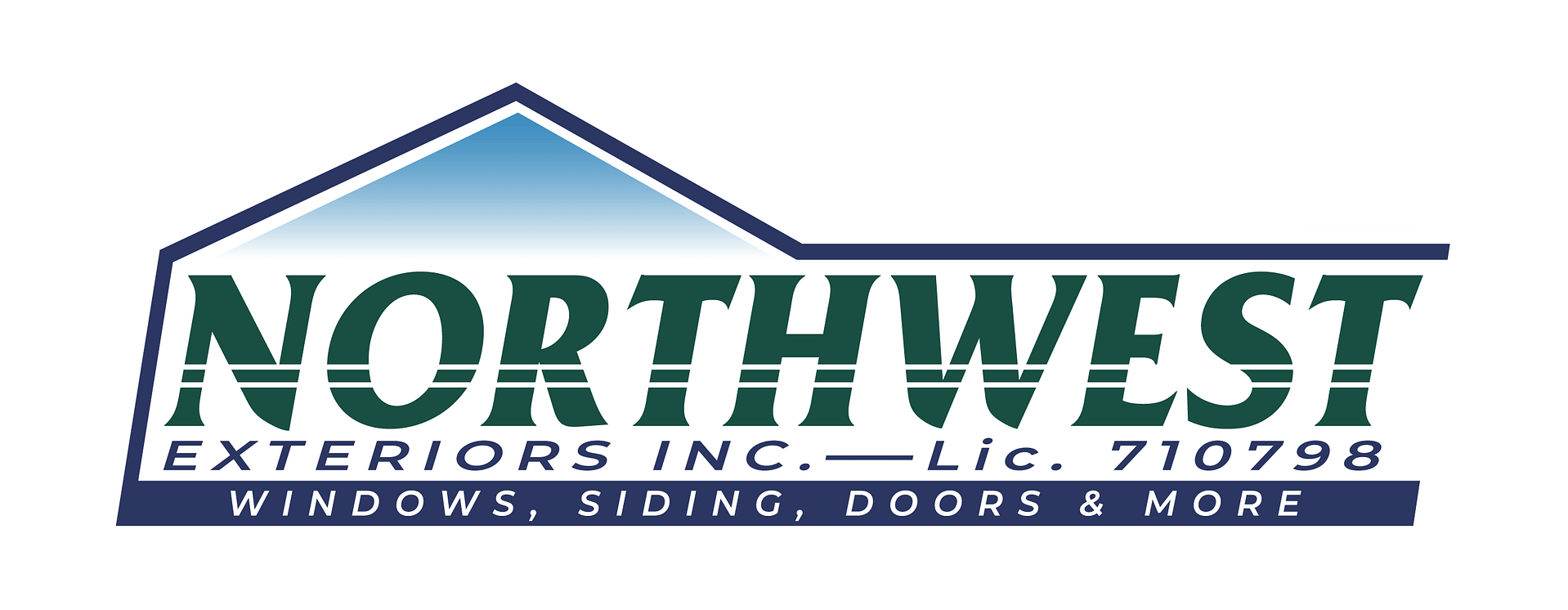
Every homeowner knows that, eventually, they’ll need a full window replacement. The perceived cost can sometimes be intimidating enough to make them wait for longer than they should. The dutiful homeowner researches the local market to find out the actual cost, and they also speak with friends and family for references to locate a reputable installer. Understanding the true costs and benefits can put every homeowner’s mind at ease and help them get started with this important project.
When considering new windows for your home, many homeowners wonder about the true costs involved. Professional window installation can vary widely based on factors such as window types, materials, and brand complexity. This guide will explore the components that contribute to window costs, compare professional installation to DIY options, and offer valuable tips for managing expenses. By reading this content, homeowners will gain a clearer understanding of window installation costs and learn how to make informed decisions that enhance their home’s comfort and value.
Understanding the Components of Window Installation Costs
This next section will lay out the various elements that determine window replacement costs.
Material Expenses for Windows and Frames
Material expenses for windows and frames significantly influence the overall costs of professional installation. Various window brands offer different pricing structures, with options including standard designs and custom features like bow windows, which can increase expenses. Homeowners considering a do-it-yourself approach should evaluate their skill level, as improperly installed Replacement windows can lead to higher long-term costs due to potential issues with efficiency and durability.
Labor Charges for Professional Installation
Labor charges for professional window installation can vary based on several factors, including the complexity of the project and the type of windows being used. For instance, installing vinyl windows, made from durable polyvinyl chloride (PVC), typically requires skilled labor for safety and efficiency. Inexperienced installation can lead to issues such as water damage, which not only affects the window’s performance but also incurs additional repair costs over time:
Additional Fees Such as Disposal and Cleanup
When considering professional window installation, homeowners should factor in additional fees associated with disposal and cleanup. The average price of installation can increase due to the need to remove old windows, which often involves costs related to freight and waste management. Proper disposal is essential to prevent any heat transfer issues that can arise from leftover materials, so the new windows function effectively in maintaining energy efficiency throughout the home.
Impact of Custom Designs on Pricing
Custom designs, such as sash windows, can significantly impact the overall pricing of window installation. Homeowners seeking unique styles often incur additional costs due to enhanced materials and labor requirements that meet specific building codes. However, investing in custom windows, including options for window tint, can lead to a higher return on investment, and potential rebates may be available for energy-efficient upgrades, further offsetting initial expenses.
Factors Influencing Professional Window Installation Prices
Several factors can significantly impact the overall window installation cost for homeowners. Variations in window size and style, coupled with the choice of materials such as laminated glass and the quality of the window frame, play crucial roles in determining expenses. Additionally, geographic location can lead to regional price differences, while seasonality and demand fluctuations may affect availability and labor costs. Lastly, the accessibility and complexity of the installation site can further influence installation costs.
Window Size and Style Variations
Window size and style variations significantly influence the expense of replacing windows. Homeowners need to consider that larger or uniquely designed windows often necessitate additional materials and labor, especially in areas prone to extreme weather conditions. Selecting Energy Star-rated windows can also help mitigate long-term costs, as they provide better insulation and efficiency, ultimately reducing energy bills and enhancing comfort in the home.
Choice of Materials and Their Quality
The choice of materials significantly affects professional window installation prices, with options ranging from standard frames to more specialized selections like awning or bay windows. Brands such as Pella offer a variety of high-quality materials, which can lead to variations in costs. When estimating window replacement, it’s crucial for homeowners to understand that investing in better materials can reduce the risk of future repairs and enhance energy efficiency, ultimately leading to savings over time.
Geographic Location and Regional Price Differences
Geographic location plays a crucial role in determining the costs associated with hiring a professional window installer. Various regions can exhibit significant price differences based on factors like labor availability, local demand, and regulatory requirements. For instance, homeowners in urban areas may face higher installation fees compared to those in rural settings, influenced by labor costs and transportation logistics for materials like window film or frames. Thus, understanding these regional variations can help homeowners make informed decisions about their window replacement projects.
Seasonality and Demand Fluctuations
Seasonality and demand fluctuations significantly impact window replacement costs. During peak seasons, such as spring and summer, homeowners may encounter higher prices due to increased demand for professional installations, often making DIY window installation less appealing. Additionally, the availability of specialized features like argon gas fills in double-glazed windows may be affected; opting for more energy-efficient options for bathrooms could result in delays or increased costs if not planned accordingly. Understanding these seasonal trends can help homeowners budget effectively for their window replacement projects.
Accessibility and Complexity of Installation Site
The accessibility and complexity of the installation site are crucial factors that influence the cost of professional window installation. For instance, replacing double hung windows in tight spaces or multi-story buildings may require additional scaffolding and labor, increasing the overall expense. Furthermore, areas affected by mold may need extra attention during installation due to safety protocols, which may lead to further costs. Homeowners should also consider potential tax credits available for energy-efficient window upgrades, which can help offset these costs.
Cost Breakdown by Window Types and Materials
This section delves into the cost breakdown of different window types and materials. It compares costs of common window styles, highlighting their longevity and potential energy savings. Price differences among frame materials will also be discussed, alongside the advantages of energy-efficient windows under initiatives like the Inflation Reduction Act. Additionally, specialty windows, such as transom designs, and their impact on budgets will be examined, helping homeowners make informed decisions that consider quality and value, including interest in Better Business Bureau ratings.
Comparing Costs of Common Window Styles
When comparing costs of common window styles, homeowners should consider the impact of manufacturing methods on pricing. For example, standard double-hung windows are often more affordable to install compared to specialty shapes like bow or bay windows, which may require more intricate retrofitting during replacement. The choice of glazing also significantly affects energy efficiency and long-term costs; opting for double or triple glazing can lead to savings on utility bills. Homeowners looking into DIY window replacement should carefully evaluate their skill level and the specific style, as proper installation is crucial for performance and longevity.
Price Differences Among Frame Materials
Prices for window frame materials can vary significantly, impacting overall installation costs. For example, vinyl frames, known for their durability and energy efficiency, often sit at a lower price point compared to premium materials like wood or fiberglass, which can enhance ventilation and aesthetics, especially in styles such as bay windows. Additionally, homeowners should consider the benefits of low emissivity (low-E) glass, which can reduce energy bills and improve home insurance rates by increasing overall value and efficiency.
Energy-Efficient Windows and Long-Term Savings
Energy-efficient windows not only enhance comfort but also contribute to long-term savings on utility bills, making them a smart choice within the window replacement process. For instance, fiberglass frames provide exceptional insulation and durability, reducing heat transfer and lowering energy costs over time. Homeowners may also benefit from tax credits for upgrading to energy-efficient windows, further offsetting replacement window costs and making investments in quality materials more appealing.
Specialty Windows and Their Budget Impact
Specialty windows, such as those designed for basements or unique architectural styles, can significantly impact the budget for window replacement projects. These windows often require custom sizes and specialized installation techniques, leading to higher material and labor costs. Homeowners aiming for aesthetic appeal while improving energy efficiency should consider the potential return on investment, as many specialty windows can enhance home equity and may qualify for financing options like a home equity loan to offset initial expenses.
Benefits of Professional Installation Over DIY
Proper installation and functionality is crucial for all window types, including casement windows and metal doors. Professional installations guarantee adherence to building codes and safety measures, while also providing valuable warranty protection for both windows and window screens. Additionally, expert installation enhances long-term performance and efficiency, ultimately safeguarding the homeowner’s investment.
Proper Installation and Functionality
Proper installation and functionality is crucial for achieving the best performance from new windows. Expert window installation provides a level of precision that DIY window projects often lack, which can impact factors like airflow and energy efficiency. Additionally, professional installers are knowledgeable about how to mitigate ultraviolet (UV) exposure and its effects so windows not only fit correctly but also enhance the home’s overall comfort and longevity.
Warranty Considerations and Protection
Investing in professional window installation not only assures quality craftsmanship but also comes with warranties that provide essential protection for homeowners. These warranties cover key aspects such as the durability of tempered glass and the functionality of skylights, making sure materials like composite and wood perform effectively over time. Should issues arise, such as noise disturbances or manufacturing defects, having a warranty means homeowners can seek repairs or replacements without incurring additional costs, ultimately offering peace of mind and financial security:
Safety Measures and Building Code Compliance
Professional window installers are well-versed in the safety measures and building code compliance necessary for successful window installations. Adhering to local regulations guarantees the window glass replacement is completed without introducing any issues that may lead to infiltration or compromise energy efficiency in varied climates. Engaging a qualified installer not only maintains compliance with these essential standards but also provides peace of mind, knowing that the installation has been executed to withstand local weather conditions and maintain proper air sealing.
Enhancing Long-Term Performance and Efficiency
Investing in professional installation of replacement windows significantly enhances the long-term performance and efficiency of a home. Expert installers from Northwest Exteriors make sure each window is fitted precisely, optimizing insulation and minimizing drafts, which directly impacts energy savings. By relying on professional services, homeowners can enjoy the benefits of higher energy efficiency and increased property value, ultimately leading to a more comfortable living environment that makes a lasting impression for those who view the location.
Tips for Managing Window Installation Expenses
Managing window installation expenses effectively involves several practical strategies. Homeowners should obtain multiple quotes from reputable installers for competitive pricing. Selecting cost-effective materials without compromising quality continues to be pivotal. Timing the project for off-peak seasons can also lead to savings. Additionally, exploring financing options and incentives can help offset costs, making window replacements more accessible.
Obtaining Multiple Quotes From Reputable Installers
Obtaining multiple quotes from reputable installers is a critical step in managing window installation expenses effectively. By comparing estimates, homeowners can identify price variations, service offerings, and any additional fees that might not be immediately apparent. Seeking out installers with strong customer reviews and an established reputation provides quality workmanship and materials, ultimately helping owners make informed decisions while maximizing their investment in energy-efficient window replacements.
Selecting Cost-Effective Materials Without Compromising Quality
Selecting cost-effective materials for window installation involves carefully balancing quality and affordability. Homeowners should consider durable options like vinyl or fiberglass frames, which provide energy efficiency at a lower cost compared to premium materials. Investing in energy-efficient windows, such as those with low-E glass, not only reduces utility bills over time but also enhances comfort, making this a wise choice for budget-conscious homeowners looking to optimize their window replacement projects.
Timing the Project for Off-Peak Seasons
Timing the window installation project for off-peak seasons can significantly reduce costs for homeowners. Generally, demand for professional installations fluctuates throughout the year, with peak seasons often resulting in higher prices due to increased labor costs and material demand. By planning installations during off-peak times, such as late fall or winter months, homeowners may take advantage of competitive pricing and flexible scheduling options, ultimately saving money while getting efficient, timely service.
Exploring Financing Options and Incentives
Homeowners looking to manage window installation expenses can greatly benefit from exploring various financing options and incentives. Many local governments and utility companies offer incentives for energy-efficient window upgrades, which can significantly reduce upfront costs. Utilizing financing plans, such as low-interest loans or flexible payment schedules, can also make the investment more manageable over time, allowing homeowners to start enjoying the benefits of new windows sooner while spreading out payments more comfortably.
Choosing the Right Professional Window Installer
Choosing the right professional window installer is essential for a successful window replacement project. Homeowners should start by evaluating the installer’s credentials and experience to confirm their qualifications. Reading reviews and testimonials helps gauge customer satisfaction, while asking essential questions provides clarity on services offered. Understanding contract and warranty terms provides transparency and security in the investment made.
Evaluating Credentials and Experience
When evaluating credentials and experience, homeowners should prioritize checking the installer’s qualifications and track record in the window replacement field. A reputable professional will typically hold relevant certifications and have extensive experience with various window types and installation techniques. Additionally, reviewing customer testimonials can provide insights into their workmanship and reliability, offering reassurance about the quality of installation services offered.
Reading Reviews and Testimonials
Reading reviews and testimonials is an essential step for homeowners seeking the right professional window installer. Positive feedback from previous clients can inform decision-making by providing insights into the quality of the installer’s workmanship and reliability. Homeowners should look for consistent themes in reviews regarding customer service, installation efficiency, and post-installation support, which will help deliver a satisfactory experience throughout the window replacement process:
Asking Essential Questions Before Hiring
Before hiring a professional window installer, homeowners should ask essential questions to make an informed decision. Inquiries about the installer’s experience, licensing, and insurance coverage can reveal their reliability and adherence to industry standards. Additionally, asking about materials used, warranty options, and project timelines provides insight into the quality of work expected, ultimately helping homeowners align their budget with the best installation practices and long-term value.
Understanding Contract and Warranty Terms
Understanding contract and warranty terms is fundamental for homeowners selecting a professional window installer. A clear contract should outline the scope of work, timelines, payment structures, and any additional fees that may arise during the installation. Warranties also play a crucial role, as they provide assurances regarding the quality of materials and workmanship, allowing homeowners to feel secure about their investment in energy-efficient windows.





